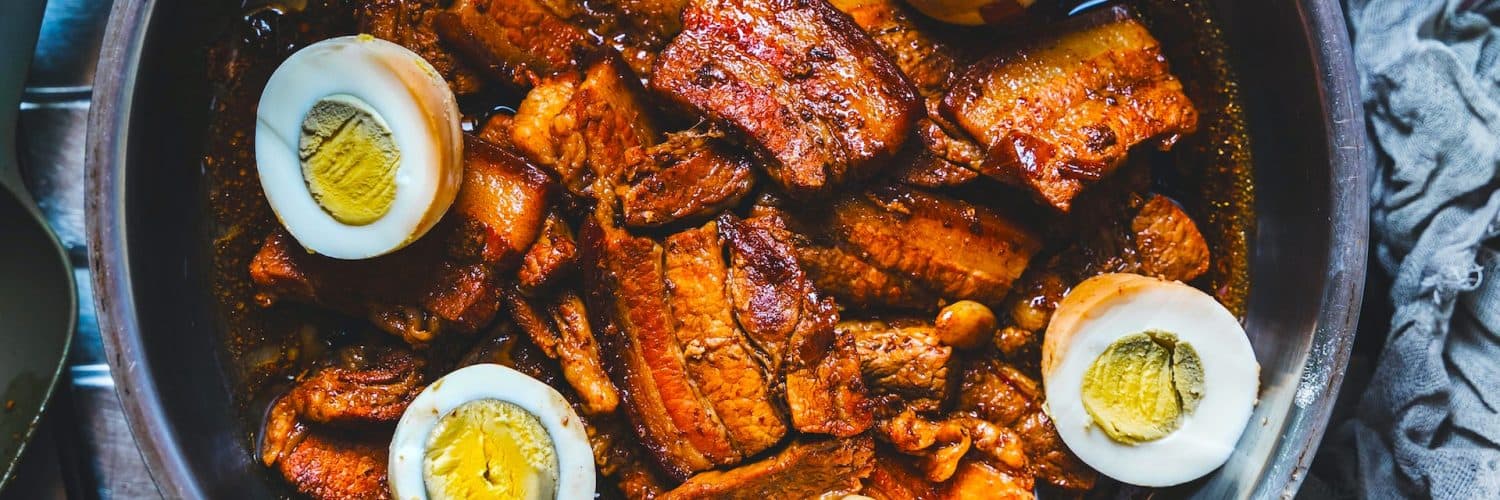Filipino Adobo: A Dish that Captures the Heart of the Philippines
As a passionate lover of world cuisines
Filipino cuisine, a tapestry of indigenous, Spanish, Chinese, and American influences, often doesn’t get the global spotlight it deserves. Yet, amidst its rich gastronomic offerings, one dish stands out as an embodiment of the Filipino soul and history: Adobo.
The Origins of Adobo
Adobo’s roots trace back before the Spanish colonization of the Philippines in the 16th century. Early Filipinos stewed their food with vinegar, an essential ingredient in adobo, primarily for preservation purposes. The acidic environment that vinegar provides prevents the growth of bacteria, which is crucial in the tropical climate of the Philippines.
When the Spaniards arrived, they found the method of cooking similar to their marinating process, which they referred to as “adobar”. Thus, they named the Filipino stew “adobo”. Yet, while the names might be coincidental, the dishes are distinct.
The Essence of Adobo
Adobo isn’t just a dish. It’s a cooking method, a tradition, and an embodiment of the Filipino spirit. Every Filipino family boasts its unique adobo recipe, passed down through generations. The core ingredients remain the same: meat (usually chicken, pork, or a combination of both), vinegar, soy sauce, garlic, bay leaves, and black peppercorns. But as with any dish deeply embedded in a culture, variations abound, reflecting regional preferences and family traditions.
The essence of Filipino adobo is in its balance of flavors. The tanginess of the vinegar, the saltiness of the soy sauce, the pungent kick of garlic, and the warmth of bay leaves and peppercorns create a harmonious blend that tantalizes the palate. This balance mirrors the Filipino spirit—resilient, harmonious, and full of zest.
The Art of Cooking Adobo
Cooking adobo is both an art and a science. It’s simple, yet requires patience and precision.
- Marinating: Begin by marinating the chosen meat in vinegar, soy sauce, crushed garlic, and black peppercorns. This process infuses the meat with the fundamental flavors of adobo. Depending on the cook’s preference, marinating can last from a few minutes to overnight.
- Browning: After marinating, the meat is browned using some oil in a pot. This step isn’t just about giving the meat a good color. It’s about sealing the juices and intensifying the flavors.
- Simmering: The marinade, along with bay leaves, is then poured back into the pot. The meat is simmered until tender, allowing the flavors to meld. Some add potatoes or hard-boiled eggs for added texture and taste.
- Reducing: The sauce is then reduced to the desired thickness. Some like their adobo dry, while others prefer a more saucy consistency.
Regional Variations
Like many traditional dishes, adobo varies across the Philippines:
- Adobong Puti: Called the “white adobo” because it omits soy sauce, it gets its flavor from salt. This variant is closer to the pre-colonial version.
- Adobong Dilaw: Uses turmeric, giving the dish a golden hue and an earthy flavor.
- Adobong Batangas: Known for its generous use of onions.
- Adobong Gata: Incorporates coconut milk, lending a rich, creamy texture to the dish.
Adobo in the Global Culinary Scene
As Filipinos have migrated across the world, they’ve taken their cherished adobo with them, introducing it to international palates. Over time, this has led to intriguing fusions. There’s adobo burrito in California, adobo pizza in Australia, and even adobo ramen in Japan.
A Symbol of Resilience
Adobo, in many ways, symbolizes the resilience of the Filipino people. Just as the dish has evolved and thrived amidst foreign influences, the Filipino spirit has remained unwavering through centuries of colonization and change.
Filipino adobo, with its rich history and even richer flavors, stands as a testament to the enduring allure of Filipino cuisine. A bite of adobo isn’t just a culinary experience; it’s a journey through time, history, and the heart of the Philippines.
As you savor its balanced flavors, remember that you’re partaking in a tradition that’s withstood the test of time, a dish that encapsulates the essence of an entire nation. Whether you’re a Filipino reminiscing about home or a global citizen exploring world cuisines, adobo is sure to capture your heart and palate.











Add comment